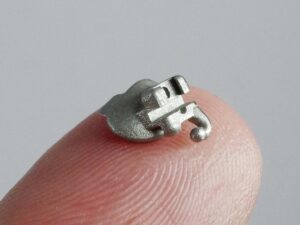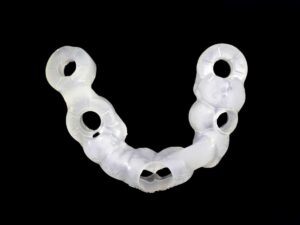DLP 3D Printed Silicone Rubber U-shaped Toothbrush Shore 25A Failed Case
- SLS 3D Printed Formlabs Nylon PA 12 L-shaped Connector Knob Shifter Prototype
- SLS 3D Printed Formlabs Nylon PA12 Heat Sink Prototyping
Posted on 2023-03-24 in Dental ¡ çç§
Gallery
About Project
Here is a failed case we’d like to share. It’s a U-shaped toothbrush prototype made with silicone rubber and DLP technology, and the Shore hardness of which is set as 25A.
As you can see from the photo, some of the bristles on the aligner are sticking together. We have printed it thrice and all outcomes failed.
The material is soft and elastic and sticky, therefore some structures could not be printed clearly. For this application, we suggest making the prototype with the urethane casting technique and PU rubber.
I have to say it’s still a beautiful print. It has delicate details and if you zoom in, the layer lines are visible.
Solution
- Step 1: First, the 3D model would be broken down into layers of 0.1 mm on the computer and sent to the 3D printer.
- Step 2: Before printing, the tank was filled with modified liquid isoprene rubber and placed under the projector.
- Step 3: The resin solidified where it was exposed to UV light, forming the first layer of silicon rubber.
- Step 4: The build plate was lowered by one layer thickness and the above steps were repeated until all layers are printed.
- Step 5: The printed part was removed from the build plate and the excess resin was removed by washing with alcohol.
- Step 6: The part was placed under UV light to enhance its mechanical properties.




